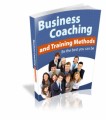Table of Contents
Introduction 5
What is Yoga? .. 8
What Yoga Isn’t 9
The Essence of Yoga .. 10
Yoga and Physical Health … 11
Why is Yoga Beneficial? 13
The Mind-Body Connection 15
Physical Benefits .. 15
Psychological Benefits …. 16
Supporting a Healthy Lifestyle 17
Emotional Benefits …. 19
Pain Management Benefits 20
Real People, Real Benefits .. 21
Different Kinds of Yoga 21
Six Major Types … 22
Hatha Yoga 23
Raja Yoga … 24
Karma Yoga …. 25
Karma Yoga …. 25
Jnana Yoga 26
Tantra Yoga 27
Advice for Beginners 28
Final Note on Consistency .. 31
Yoga Equipment & Accessories … 31
Yoga Mats .. 32
Yoga Towel 33
Yoga Bags .. 33
Yoga Straps 34
Yoga Sandbags and Bolsters … 34
Yoga Medication Cushions, Chairs, Benches, and Pillows .. 34
Yoga Balls .. 34
Yoga Blocks …. 35
Yoga Videos/DVDs … 35
Yoga Music 35
Yoga Clothing . 36
Conclusion …. 36
Sample Content Preview
As you read through these sections, please bear in mind that there is absolutely no attempt here, directly or indirectly (or in any other way possible!) to endorse or promote any religious view. This is because the view of this book is same view that is held by the world’s foremost authorities on yoga: that it is not a religion. It does not have a dogma.
While there are indeed different schools and streams of yoga – there are actually thousands of them – they have all managed to coexist quite peacefully because, for the most part, yoga is not evangelical, which simply means that it does not seek to spread itself as part of its mission.
Please note that the statement above in no way criticizes or comments on evangelical orders, such as Evangelical Christianity; the point here is simply that the overwhelming majority of yoga movements does not consider spreading yoga to be a tenet of its identity.
Yet, while the yoga that is described in this book (and experienced in most of the world) is not a religion, it does very seamlessly fit into many people’s existing religious framework.
In other words, if you are a Catholic, a Protestant, a Muslim, a Jew, a Sikh, or anything else and identify yourself as being a part of any faith at all, yoga doesn’t ask you to replace that faith with someone else, or offer you a competing or contradictory view of what you already believe.
So please remember: yoga, as it is discussed and promoted in this book (and in virtually every book worth reading!) is not a religion.
As we’ll begin to understand in the next section of this book, yoga is really nothing more, and nothing less, than harassing the power of human attention, and using it to benefit the body and mind. It is an approach to life, here and now.
What is Yoga?
What was I looking for that night in Bombay? The same thing I had been looking for as long as I can remember. The same thing all of us seek in one way or another. The “answer” to life, whatever that might mean. The “truth.” The reason for living, dying, or being “here” at all.” – Beryl Bender Birch
Yoga can seem like a complicated concept; or, at the very least, a dizzying array of physical manipulations that turn seemingly happy-looking human beings into happy looking human pretzels.
Or even more disconcerting, as we have alluded to in the Introduction, a stereotype does exist in places where the term yoga is synonymous with cult, or some kind of archaic spiritual belief that compels one to quit their job, sell their house, and go live in the middle of nowhere.
In actual fact, Yoga is a very basic thing; and if you’ve had the opportunity to visit a country where it has been established for generations – India, Japan, China, and others – it’s really rather, well, ordinary.
The practice of yoga came to the west back in 1893 when one of India’s celebrated gurus, Swami Vivekananda, was welcomed at the World Fair in Chicago. He is now known for having sparked the West’s interest in yoga.
Literally, the word yoga comes from the Sanskrit term Yug, which means: “to yoke, bind, join, or direct one’s attention”. At the same time, yoga can also imply concepts such as fusion, union, and discipline.
The sacred scriptures of Hinduism (an ancient belief system from India that has a global presence) also defines yoga as “unitive discipline”; the kind of discipline that, according to experts Georg Feuerstein and Stephan Bodian in their book Living Yoga, leads to inner and outer union, harmony and joy.
In essence, yoga is most commonly understood as conscious living; of tapping into one’s inner potential for happiness (what Sankrit refers to as ananda).
What Yoga Isn’t
Sometimes it’s helpful to understand things by what they aren’t; especially when dealing with a topic, like Yoga, that is quite easily misunderstood.
Authors and yoga scholars Feuerstein and Bodian help us understand yoga by telling us what it is NOT:
– Yoga is NOT calisthenics (marked by the headstand, the lotus posture or some pretzel-like pose). While it is true that yoga involves many postures – especially in hatha yoga – these are only intended to make people get in touch with their inner feelings.
– Yoga is NOT a system of meditation – or a religion – the way many people are misled to believe. Meditation is only part of the whole process of bringing ourselves into the realm of the spiritual.
The Essence of Yoga
Virtually all yogic science and philosophy states that a human being is but a fragment of an enormous universe, and when this human being learns to “communion” with this vastness, then he/she attains union with something that is bigger than him/her. This attachment or tapping into something bigger thus enables one to walk the true path of happiness. By flowing along with the force, the individual is able to discover truth.
And with truth comes realization; but to attain realization, our words, thoughts and deeds must be based on truth. People attend courses on yoga and go to studios to learn new techniques in yoga, but yoga teacher Tim Miller said that “true yoga begins when [you] leave the studio; it’s all about being awake and being mindful of your actions”.
Other Details- 1 Ebook (PDF), 38 Pages
- 2 Ecovers (JPG)
- Year Released/Circulated: 2018
- File Size: 7,007 KB
License Details:
[YES] Can sell and keep 100% of the sales.
[YES] Can edit the sales letter and graphics.
[YES] Can be bundled into another paid package and sell at a higher price.
[YES] Can be added into a paid membership site.
[YES] Can pass on the Resell Rights privilege to your customers.
[NO] Cannot be given away for free.














